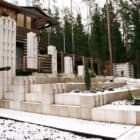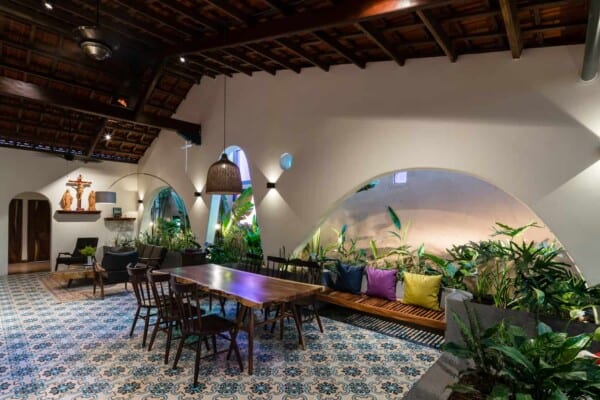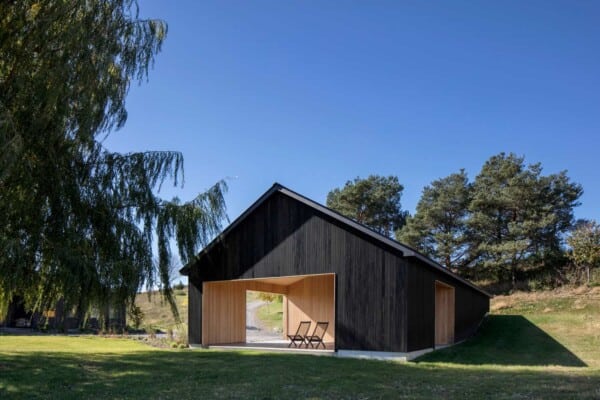Vladislav Platonov, principal of Moscow-based architectural studio Carlson & Co has completed the Drova Villa project in 2010.
This cottage is located in Snegeri housing development nearby Moscow.
The composition of the residence was designed entirely according to the site landscape.
Drova Villa project by Anna Martovitskaya
“The house is inserted into the existing hill with its numerous terraces and it seems it has scattered down the hilly territory into separate, but similar pieces. This impression is intense due to the uncommon design of the roof: traditional gable roof is torn into a few segments, “pulled apart” all over the stretched residential volume.
To enter the building into the landscape maximally, the architects made not only lawn on the accessible roof area, but planted bushes and trees there.
“Our building is a collection of different pictures, each is “cut out” fitting the spot it occupies. Besides, we save all the trees on site, the building was inserted among them. The landscape, plants dictated their terms and due individual landscape features there appeared a new item “- says the author of the project.
Architectural image of the building consists of combination of natural wood and light stone. In particular, its basement is gathered of porous foam concrete, notably the architects did not use stucco or finish it, but decorated with carvings or turned to the rocky surface. Special treatment protects surface from moisture, but leaks air, and the building walls so effectively “breathe”, that it did not require an air-conditioning system.
As the main material for the bearing skeleton of the building they chose extra strong LVL pine timber, and heat-treated pine panels were used for finishing. Interestingly, all the wooden parts were covered with oil without the UV filter thereby color of the wood is constantly changing. For example, on the sunny side it has almost lost its color and is no different from the foam blocks. The project authors expected it – a building, which basement is overgrowing with the moss and walls are fading will gradually merge with the surrounding landscape.
“Such building does not need upkeeping – painting or renewal, – said Vladislav Platonov. – I call this technique “denim architecture”. Like old jeans look more interesting, so a living, “fading” house has its bright individuality and becomes an integral part of the landscape.”
Photos courtesy of Carlson & Co
Via Ana, Architectural










































